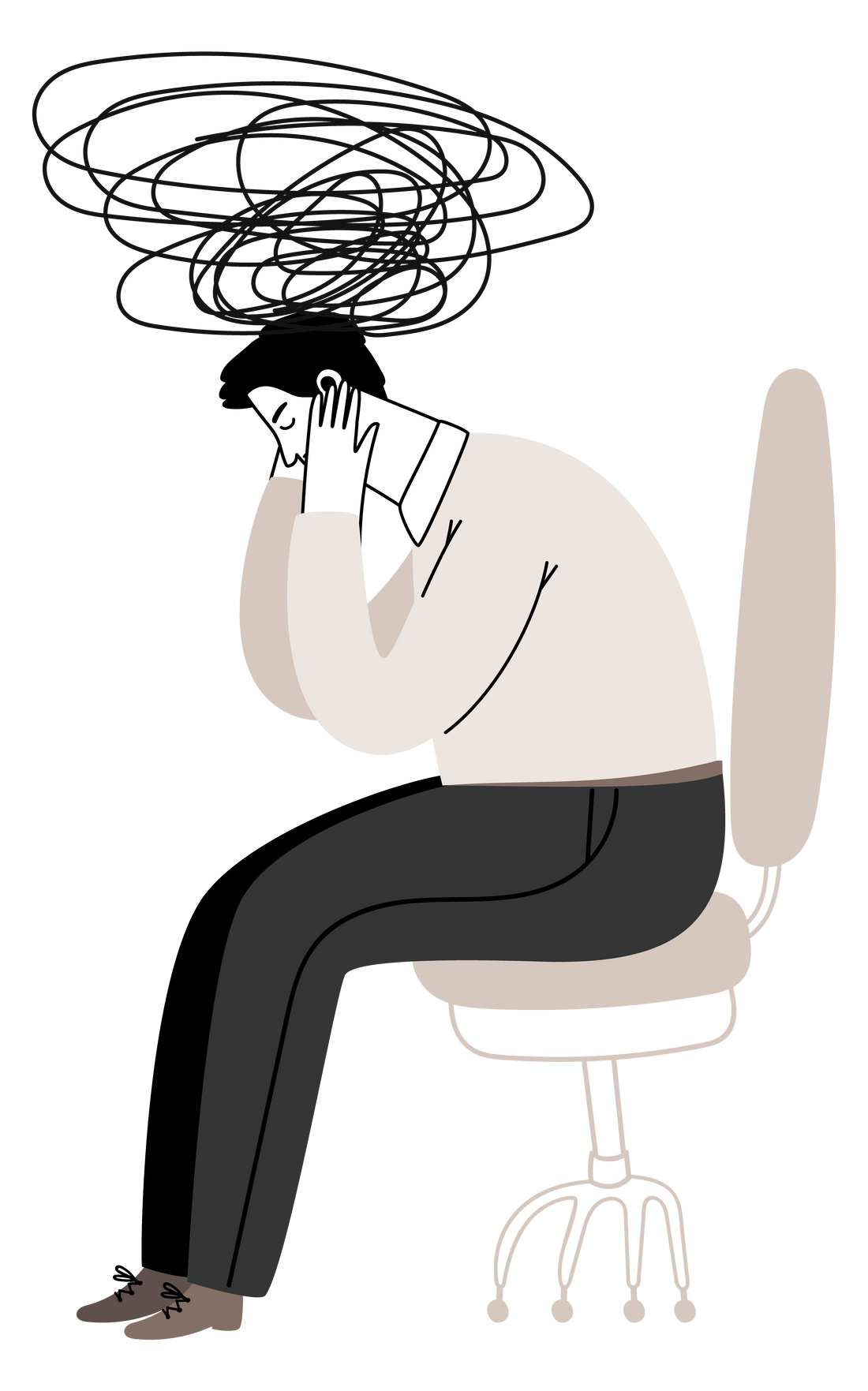
6 Quick Anxiety Relief Techniques That Actually Work: Scientifically Proven Ways to Calm Down Fast
Ashley AyersShare
Anxiety isn’t new, but the way we experience it today is different. In the past few years, day-to-day life for most of us, has changed. We're working from home more often, spending more time online, and juggling an always-on lifestyle. With emails, notifications, and the pressure to be productive at all times, it’s no surprise that anxiety levels are higher than ever.
The good news?
You don’t need to book a therapy session or spend an hour meditating to feel better!
Science-backed techniques can help you calm down in just a few minutes.
Here’s how to reset your nervous system fast when stress creeps in:
1. Breathe Like Your Nervous System Depends on It (Because It Does)

When anxiety kicks in, your body thinks you’re in danger, triggering the fight-or-flight response. Your heart rate increases, breathing becomes shallow, and your brain gets stuck in overdrive. The fastest way to reverse this? Breathing techniques.
-
Box Breathing (4-4-4-4 Method): Inhale for 4 seconds, hold for 4, exhale for 4, hold for 4. Repeat until your body starts to relax.
-
4-7-8 Breathing: Inhale for 4, hold for 7, exhale for 8. This method activates the parasympathetic nervous system, signaling your brain that you’re safe.
-
The Physiological Sigh: Inhale deeply, take a second small inhale, then exhale slowly through your mouth. This is a natural reset used by the body to release stress.
Research shows that focused breathing can lower cortisol levels, reduce heart rate, and bring clarity back fast.
2. The 5-4-3-2-1 Grounding Technique: A Mental Reset

Overthinking? Racing thoughts? The 5-4-3-2-1 grounding technique helps break the anxiety spiral by pulling you into the present moment:
-
5 things you can see (your laptop, the sky, a book)
-
4 things you can touch (your sweater, your phone, a cup of coffee)
-
3 things you can hear (birds outside, distant traffic, a song playing)
-
2 things you can smell (your shampoo, fresh air)
-
1 thing you can taste (tea, gum, toothpaste)
This technique is widely used in cognitive behavioral therapy (CBT) to disrupt anxious thinking and reorient your brain to reality. It’s especially helpful during work stress or before social situations.
3. Cold Water Therapy: The Science-Backed Shock to Your System

If you’ve ever splashed cold water on your face and felt instantly more awake, there’s a reason. Cold exposure stimulates the vagus nerve, which regulates heart rate and stress responses.
Try:
-
Splashing cold water on your face for a few seconds.
-
Running cold water over your wrists (a high-blood-flow area).
-
Holding an ice cube in your hand until you feel focused again.
This method is used in dialectical behavior therapy (DBT) to help people regulate emotions fast. It’s like hitting a physiological reset button.
4. Shake It Off: How Movement Discharges Anxiety

Anxiety isn’t just in your mind—it builds up physically in your body. That restless energy? It needs an outlet. Quick movement helps release stress hormones like cortisol and adrenaline, allowing your nervous system to reset.
Try:
-
Shaking out your hands and arms for 30 seconds (sounds weird, but it works).
-
Jumping jacks, stretching, or pacing for a minute.
-
Going for a brisk walk while focusing on the rhythm of your steps.
Studies show even two minutes of movement can lower stress and boost focus.
5. Name It to Tame It: The Mind Trick That Lowers Anxiety
Download a FREE feelings wheel with guide here!
When anxiety feels overwhelming, your brain is stuck in emotional mode (the amygdala). A simple trick to take back control? Label your emotions out loud or in writing.
For example:
-
“I feel overwhelmed because my inbox is full.”
-
“I’m anxious because I have a deadline.”
Research from UCLA found that naming emotions reduces their intensity because it shifts activity from the emotional brain to the logical brain (the prefrontal cortex). It’s a small but powerful way to break free from anxiety’s grip.
6. The Anxiety Emergency Kit: Be Prepared

Some days, anxiety hits out of nowhere. Having a small, go-to kit can help you handle it fast. Consider keeping:
-
Lavender essential oil (proven to reduce stress).
-
A grounding object (smooth stone, stress ball, or something comforting).
-
Noise-canceling earbuds (to block out overstimulation).
-
A go-to playlist of calming or upbeat music.
-
A short list of affirmations ("This feeling is temporary," "I am safe," "I can handle this").
Even knowing you have tools ready can make a difference in managing stress.
Final Thoughts: Small Actions, Big Impact

You don’t need an hour of meditation or a weeklong retreat to reduce anxiety. Small, science-backed techniques like breathing exercises, grounding, movement, and cold exposure can reset your nervous system in just minutes.
The next time anxiety sneaks up on you, try one of these methods. The more you practice, the easier it gets to calm your mind—anytime, anywhere.
Thank you for reading! As a token of my appreciation, here is a discount just for you!
Click here to get the Anxiety Journal for only $6!
(or use code STRESSFREE)
Regular price $9


